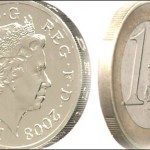Friday’s trade saw EUR/SEK within the range of 9.3979-9.5219. The pair closed at 9.5144, gaining 0.86% on a daily basis.
At 8:57 GMT today EUR/SEK was down 0.04% for the day to trade at 9.4936. The pair touched a daily low at 9.4807.
Fundamentals
Euro zone
Sentix Investor Sentiment
Confidence among investors in the Euro zone probably continued to improve during the current month, with the corresponding index coming in at a reading of -0.9. In December it stood at -2.5, while in November – at -11.9. If so, this would be the fifth consecutive month, during which the gauge occupied negative territory. The index is based on results from the SENTIX survey, one of the most prominent surveys, reflecting investors’ opinion in Germany. It encompasses 2 800 respondents, with 510 of them being institutional investors. Respondents present their expectations regarding ten different markets for a period of one and six months. Readings above zero indicate that respondents were predominantly optimistic, while readings below zero show pessimism. Higher-than-expected readings would have a bullish effect on the common currency. The official index value is due out at 9:30 GMT.
German consumer inflation – preliminary estimate
German preliminary annualized consumer inflation probably decelerated to 0.4% in December, according to the median forecast by analysts, from 0.6% in November. If so, this would be the lowest annual inflation since November 2009, when the final CPI rose 0.4%. Energy prices dropped at an annualized rate of 2.5% in November. Prices were down in particular for heating oil (-9.8%) and motor fuels (-4.5%). Prices of electricity, on the other hand, were up 1.9%, following another 1.8% gain in October. Food prices remained without change compared to November 2013, while cost of services rose above average, or 1.4% compared to November 2013, supported mainly by the 1.4% increase in net rents, according to the report by Destatis.
The Consumer Price Index (CPI) presents a general picture of the price change in the country, while encompassing all household types, all regions and all goods and services demanded (food, clothing, automobiles, rental, repair and hairdressing services etc). The index is based on a basket of goods and services, which is regularly renewed, so that goods and services, purchased more often by consumers, are included in the present survey.
The nation’s preliminary annualized inflation, evaluated in accordance with the harmonized methodology, probably decelerated to 0.2% in December, after being at 0.5% in November. The harmonized methodology is used for the sake of consumer inflation comparison in an international context (member-countries in the Euro area). In case the CPI came below expectations and further distanced from the 2-percent inflation objective, set by the European Central Bank, this would certainly mount selling pressure on the euro. Destatis is scheduled to publish the preliminary CPI data at 13:00 GMT.
ECB policy
Today the common currency plunged to lows unseen since March 2006 against the US dollar, as the European Central Bank indicated it is to begin a wide-scale government-bond purchasing program. In Germany policy makers criticized this move, as in their view, quantitative easing poses a threat to financial stability and lowers the incentive for governments to restructure local economies.
In addition, the ECB President Mario Draghi said that the risk of deflationary processes emerging in the Euro area could not be entirely excluded, but was limited. He called for immediate actions against such a risk.
“The risk that we don’t fulfill our mandate of price stability is higher than it was six months ago,” Draghi said in an interview for the Handelsblatt newspaper, published on January 2nd. “We are in technical preparations to alter the size, speed and composition of our measures at the beginning of 2015, should this become necessary.”
The ECB policy makers are to meet next on January 22nd.
“The reasons to be selling the euro were pretty clear over the weekend: Draghi being a step closer to QE and deepening concerns about the Greek political situation,” said Sean Callow, a currency strategist at Westpac Banking Corp. in Sydney, cited by Bloomberg. “The euro was so close to such a keenly watched round number as $1.20 that we didn’t need any fresh news to tip us over the cliff.”
Another selling impulse for the euro came from Greece, where an election campaign was initiated that may see victory by an anti-austerity party, the same media reported. Alexis Tsipras, the leader of opposition in the country, said his Syriza party would put an end to austerity policy, encouraged by Germany, in case it achieves victory at the January 25th vote.
Pivot Points
According to Binary Tribune’s daily analysis, the central pivot point for the pair is at 9.4781. In case EUR/SEK manages to breach the first resistance level at 9.5582, it will probably continue up to test 9.6021. In case the second key resistance is broken, the pair will probably attempt to advance to 9.6822.
If EUR/SEK manages to breach the first key support at 9.4342, it will probably continue to slide and test 9.3541. With this second key support broken, the movement to the downside will probably continue to 9.3102.
The mid-Pivot levels for today are as follows: M1 – 9.3322, M2 – 9.3942, M3 – 9.4562, M4 – 9.5182, M5 – 9.5802, M6 – 9.6422.
In weekly terms, the central pivot point is at 9.4977. The three key resistance levels are as follows: R1 – 9.6390, R2 – 9.7637, R3 – 9.9050. The three key support levels are: S1 – 9.3730, S2 – 9.2317, S3 – 9.1070.





